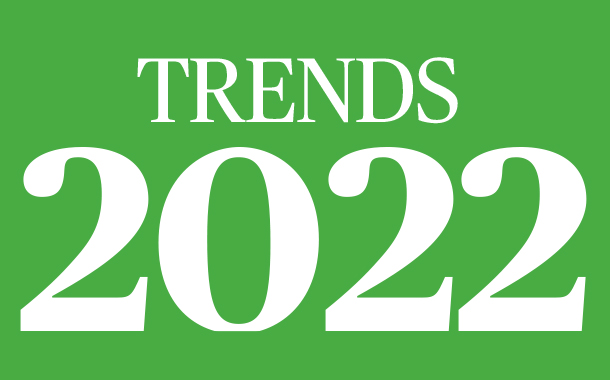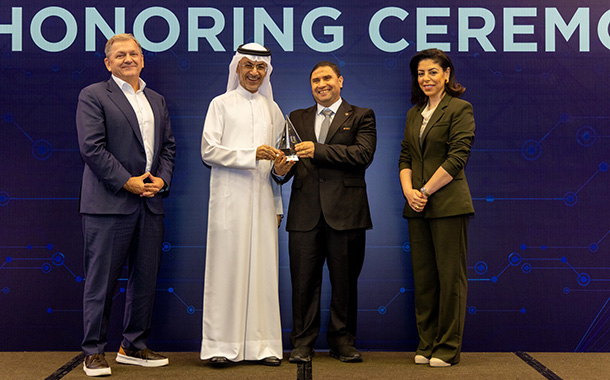Even with heads of state coming to an agreement on sustainability requirements, it will largely fall on individual companies to enforce these standards upon themselves. While many organisations have already expressed, and even implemented, plans to reduce or eliminate carbon emissions, many have yet to adopt any strategy to make both immediate and long-term impacts.
Without a unified, standardised pact that holds both countries and companies accountable, minimal change will be made. Until such a standardisation exists, consumers and investors are the ones most likely to force companies to make the necessary shifts, as the younger and more environmentally conscious generations continue to grow into the largest global consumer base.
Data fabric, BI, AI, ML, user experience must all come together in a single solution to be meaningful
Delivering information just in time, instead of in traditional dashboard forms, which look in the rear-view mirror, will be critical in 2022. Historical data and representations are not enough for successful decision making. Predictive intelligence needs to be blended into the process.
Ultimately, these insights are needed at the point of decision and action, instead of in a separate operational location. Data fabric, business intelligence, AI, machine learning, and user experience all must come together in a single solution to be meaningful.
Supply chain
2021 has been a crazy year for supply chain professionals. A world of people who had no idea what a supply chain was at the beginning of the year now have a much better understanding of how the goods they purchase get from one place to another. The reality remains that a lot of the transport issues manufacturers are facing in 2021 are not going away. Be ready for plenty of supply chain news in 2022 including these important trends.
As long as several global economies continue to thrive, the demand for goods and services will continue to hold transportation rates, particularly ocean, at record levels. However, with inflation rearing its head in various parts of the globe, higher prices on products may lead to a consumer slowdown, allowing manufacturers and their suppliers some breathing room to restock their supplies.
That said, the backlog of existing demand will keep ocean transport rates higher until bottlenecks drain out. As we see supply and demand begin to balance out in the second half of 2022, transportation rates should creep lower heading into 2023.
As long as global economies continue to thrive, demand for goods will continue to hold transportation rates, particularly ocean, at record levels
With supply shortages stretching from groceries to semiconductors, many organisations have been forced to examine ways to bring crucial components closer to final production process to ensure history doesn’t repeat itself. With many global organisations looking to localise larger portions of their supplier base, supply chains will find themselves better equipped to handle large demand spikes as they occur.
With the global vaccination effort proceeding at a slower than anticipated pace, new variants of the COVID-19 virus will continue to drive caution and hesitation regarding traveling and fully reopening businesses. As a result, organisations will move away from just-in-time JIT inventory strategies and will bulk up inventory levels, so they can avoid production disruptions.
With global organisations looking to localise their supplier base, supply chains will find themselves better equipped to handle spikes
This also allows organisations to use supply chain finance tools to extend payment terms to suppliers using innovative finance options with lenders. Organisations can build inventory strategies that are less susceptible to disruption while allowing their supply partners to maintain healthy capital levels.
Technology
As the business world continues to transition to remote-work environments, the definition of user experience continues to change. While voice access, capabilities have been heavily hyped for some time in the enterprise arena, security controls will continue to tighten, and employees will need new ways of executing work away from traditional web screens.
Users will want to build their own processes to match their exact needs not simply take what is out of the box
In 2022, we expect that users will demand nearly full operational functionality through voice-enabled devices – with digital assistants that augment and automate tasks.
As ERP systems evolve to modern Enterprise Application Platforms EAPs, look for expanded platform definitions to provide not only for composability in cloud environments, but also across hybrid cloud, on-premises environments. Composability will be broken down further to the business process level, and not just at the application level.
No two businesses are the same
This means that enterprises will need a standard operating model and platform for consistent integration, workflow, data analysis, and extensibility. Users will want to build their own processes and experiences to match their exact needs, not simply take what’s out of the box.
No two businesses are the same. Users will demand easy and simple ways to define their business interactions in a flexible system. Therefore, expect the microservices discussion to accelerate, as companies strive to build and assemble their software systems, as if designing a floor plan for a new home.
Users will demand easy and simple ways to define their interactions in a flexible system
Businesses will start deploying EAPs, through which business processes not only will be assembled to match needs, but also will be self-sustaining and corrective, based on AI and intelligence that is baked into the framework.
The actual convergence of analytics, intelligence, and user experience will enable successful, real-time decision making.
Core and edge solutions already are connected, for the most part, and edge solutions do not refer to devices anymore. This view acknowledges that some business operations still want to maintain local control on premise. Being able to navigate a true hybrid cloud, on-premises business, while not impacting productivity, will be key.
Companies will strive to assemble their software systems as if designing a floor plan for a new home
Customers will need cloud innovations in the form of machine learning, for example. At the same time, they need the ability to apply such technologies to their on-premises systems – not just to stereotypical edge devices.
Historical data and representations are not enough for successful decision making and predictive intelligence needs to be blended into the process.




















